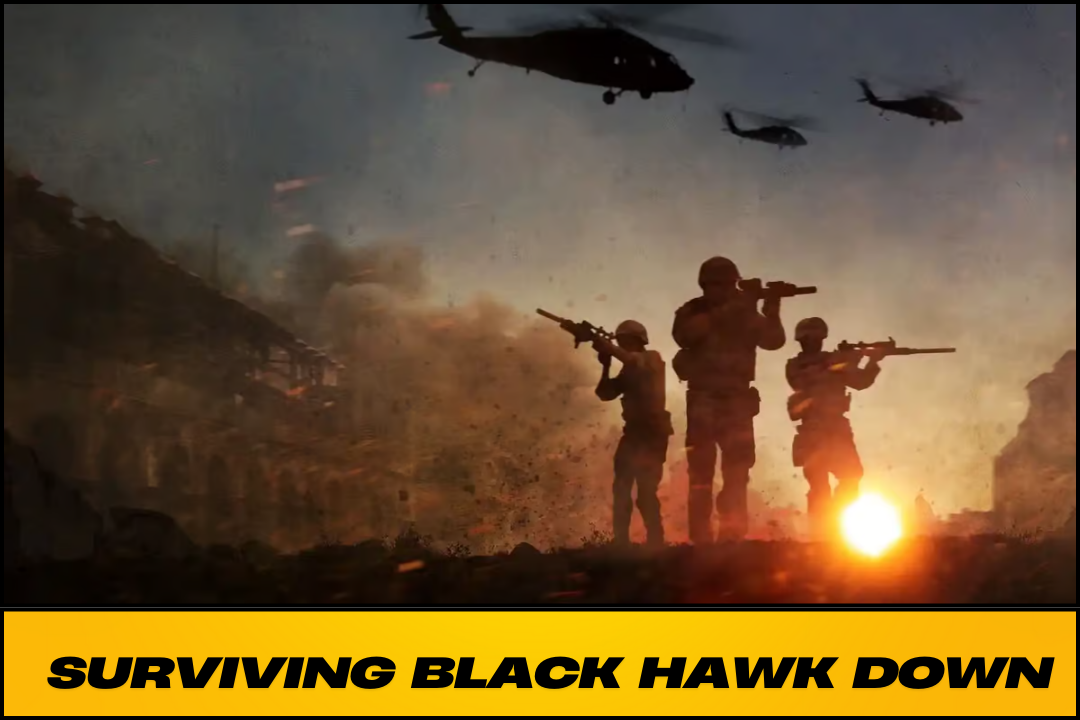Introduction
The phrase “Surviving Black Hawk Down” has become synonymous with endurance, tactical prowess, and heroism under fire. It refers to the harrowing events of the Battle of Mogadishu, which took place on October 3-4, 1993. This battle saw elite U.S. Army Rangers and Delta Force operators fighting against overwhelming Somali militia forces after two Black Hawk helicopters were shot down. The intense 18-hour battle tested the limits of human resilience and military tactics.
The Battle of Mogadishu: A Brief Overview
The mission, formally known as Operation Gothic Serpent, aimed to capture key lieutenants of Somali warlord Mohamed Farrah Aidid. However, what was supposed to be a short raid turned into a prolonged and deadly urban battle. The downing of two Black Hawk helicopters turned the operation into a desperate fight for survival.
Key Events of the Battle:
| Event | Description |
|---|---|
| Mission Objective | Capture key figures in Aidid’s militia leadership |
| Helicopters Down | Two Black Hawks (Super Six-One and Super Six-Four) shot down |
| Urban Warfare | U.S. troops surrounded and forced to fight against thousands of militia |
| Rescue Efforts | Intense rescue operations, including armored reinforcements |
| Casualties | 19 U.S. soldiers killed, over 70 wounded, and hundreds of Somali casualties |
Strategies for Survival in Urban Combat
Surviving an intense urban combat scenario like Black Hawk Down requires a combination of mental fortitude, tactical expertise, and team coordination. Here are some essential strategies that played a role in the survival of American forces:
1. Situational Awareness
Understanding the battlefield is crucial. Soldiers had to continuously assess threats, identify sniper positions, and locate safe zones amid the chaos. Urban warfare requires quick decision-making, as the enemy can hide in buildings, alleyways, and rooftops.
2. Tactical Communication
Effective communication was a lifeline. U.S. troops used radio transmissions to call for air support, coordinate movements, and relay critical information about enemy positions. Breakdowns in communication can lead to disarray, but the ability to adapt and relay messages ensured survival.
3. Adapting to Unpredictable Situations
The battle turned into a nightmare scenario when reinforcements were delayed, and soldiers had to hold out for hours under relentless enemy fire. The ability to stay mobile, shift positions, and conserve ammunition played a significant role in survival.
4. Teamwork and Brotherhood
One of the most critical aspects of surviving Black Hawk Down was the unbreakable bond among soldiers. They relied on each other for covering fire, medical assistance, and morale support. No one was left behind, embodying the “Ranger Creed.”
5. Resourcefulness Under Fire
Limited ammunition and supplies meant soldiers had to scavenge for weapons and use makeshift solutions. Improvised medical treatment, securing fortified positions, and utilizing captured enemy supplies were all key survival tactics.
The Psychological Toll of Surviving Black Hawk Down
The battle was not just a test of physical endurance but also a psychological struggle. Soldiers faced extreme stress, fatigue, and the constant threat of death. Many veterans of the battle have spoken about the lasting effects, including PTSD. Mental resilience, focus, and training helped them navigate through the horror of combat.
Lessons Learned from the Battle
The events of Black Hawk Down led to significant changes in U.S. military tactics and operations:
- Enhanced Helicopter Protection: Upgraded armor and defensive measures for helicopters.
- Improved Coordination with Allies: Strengthening partnerships to avoid being isolated in battle.
- Better Preparedness for Urban Warfare: New training programs emphasizing close-quarters combat and urban survival.






